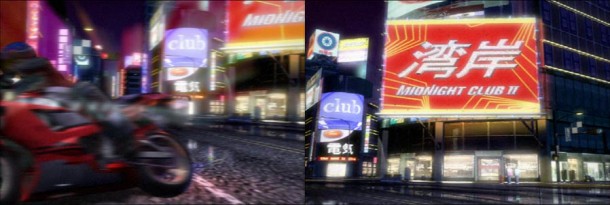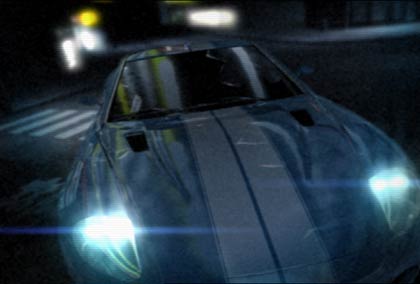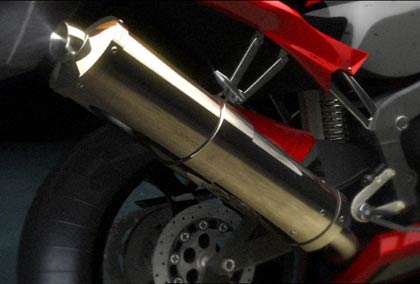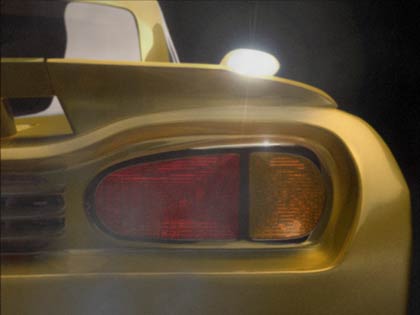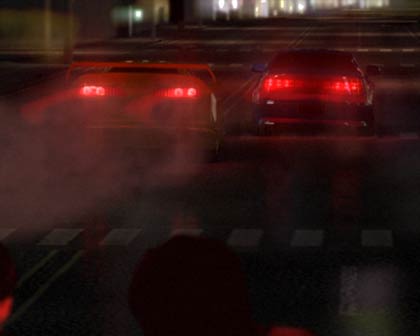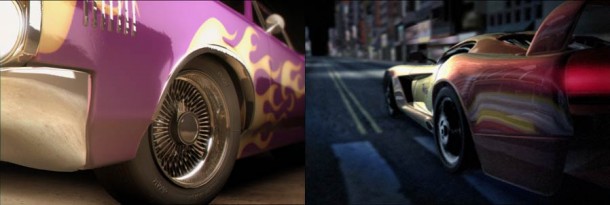Animatics: Midnight Club II
An interview with Colin McGreal
and Bryan Godwin from Charlex
Based in New York, Charlex is a 3D animation and effects studio for film and television. You may have seen of their recent TV commercials such as M&Ms, River Rock, AOL’s “Quotes” along with “Cingular Bandshell”. Charlex is also producing its own, in-house 3D animated short film – l?brätz, produced by the company’s ECD and founder, Alex Weil.
We talk with Colin McGreal and Bryan Godwin from Charlex who recently completed a spectacular cinematic/trailer for Rockstar’s Midnight Club II.
CGC: What was the original nature of this project from Rockstar?
Colin: Rockstar, which was by this time known as a company that had stepped up standards for videogame play, really wanted to do something different than the ordinary videogame opening. Something that would stand out. Something that would help set the tone and irreverent attitude for the street-racing theme in a cinematic manner.
CGC: Is this your first gaming project?
Bryan: It was Charlex’s first gaming project — however several of our team members have game production experience which allowed us to get up to speed quickly. We’re definitely open to more projects like this one.
CGC: What were the creative parameters given by the client for this?
Colin: Very little other than it had to be attention grabbing and set the tone for the game play as mentioned above. This made the process more interesting and challenging since the creative evolved with the work flow. The only parameters were to utilize the CG models of the cars in the game (with modifications for higher resolution animation) and the architectural models of the streets and cities used in the game (again, enhanced and modified for the higher resolution production).
CGC: This was a very abstract project, essentially, you had to make a dramatic 30 second opening for the game. How do you plan, storyboard for something like this?
Colin: We did a little storyboarding initially to have some semblance of a piece, but knew this was almost just a point of reference to depart from. We began by looking at as many illegal street racing videos as we could get our hands on for the culture of the sport initially and as reference for movement of the cars. These videos invariably feature many edits of home video clips, shot at night, shot shaky, shot in a very amateur manner. The videography was often very grainy, blurry, and generally very raw. When watching this we decided this visual aesthetic was a good way to pursue the look for the CG. It was a method to recreate a feeling of spontaneity and urgency that we saw so much in the videos. It also made it fun for the CG artists who are so used to making things bright and shiny and coherent for big glossy commercial spots.
So as we found shot ideas in the videos that we liked or would be inspired by, we dropped them into a cut, a sort of rip-omatic, similar to what George Lucas did for “Star Wars” space battles when he initially cut together shots from old WWII movie dogfights.
To keep this aesthetic maintained throughout the production process, we used a work flow system that we often use here at Charlex for our projects. In a suite we will set up a Smoke editor next to a Maya animator (and sometimes a graphic designer) and the animator will begin to rough out quick ideas for shots and immediately feed them to the editor. The editor will play around with them and influence how shots need to be developed further or help figure out what shots are needed that are lacking. This process was very organic, fed from people from all aspects of the productions, with the Rockstar client involved as well during some of these sessions.
Tell us about the time it took to deliver the project and how many people were involved?
Bryan: It was about a 6 week schedule with around 10 artists total.
CGC: How did you integrate the game’s assets into your own pipeline?
Bryan: Rockstar provided us with large Maya scenes exported from their game engine. We then would scan through the scenes and extract the assets needed to flush out our shots. Those assets were then up-rezed and retextured in Maya.
CGC: Did this cause any specific challenges?
Bryan: Yes, since the exports from the game were very large locations it was difficult to narrow down the areas to be used in a particular scene. It took a lot of time to sort through the myriad of streets and buildings in the game to find appropriate assets and locations.
CGC: What sort of technology did you use at Charlex for 3D, animation, rendering, compositing, etc?
Bryan: We animated and modeled entirely in Maya. The bulk of the rendering was done with Mental Ray. We composited in Shake.
CGC: Any funny anecdotes from this project for our readers?
Colin: There was this hot chick who was one of the Rockstar assistants. Unfortunately she didn’t go for me. She liked one of our editorial assistants, Ethan.
Bryan: For a couple of shots we actually filmed some of the artists in silhouette to be able to have people in frame. Also, we had a ton of fun working with the paint jobs — it was kind of a digital version of pimp my ride, what with all the gold trim and purple chameleon paint. The FUNNIEST part of it all was working through Christmas and New Years. Now THAT’S what I call a party.
Colin McGreal, Creative director
Bryan Godwin, CG Supervisor/Art Director
Related Links:

